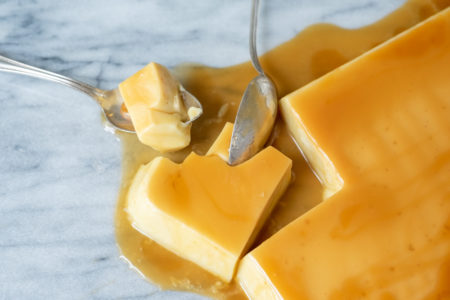There are many cuts of beef and many ways to cook them, but nothing quite says the holidays or Christmas more than an indulgent rib roast with all the trimmings.
If you’re looking to cater for a smaller crowd than usual this year for one reason or another (yes, we’re looking at you, Covid-19!), then cooking a smaller cut of rib roast in the Suvie, using sous vide mode, is a perfect solution and takes only 3 hours. It is then finished with a quick sear in a hot skillet to crisp up the delicious fat cap (it’s the holidays, after all!).
What is Prime Rib / Rib Roast and Where Can I Buy It?
This slightly pricey cut of beef is taken from the beef rib primal cut and usually has good marbling and a generous cap of fat, which gives excellent flavor and tenderness. Once you taste it, it justifies the expense. It’s usually sold on the bone and is sometimes called a “standing rib roast” due to (yes, you guessed it!) being roasted standing on the ribs. A bone-in rib-eye steak is a standing rib roast cut between the ribs into steaks.
There are also smaller, more manageable (and affordable!) sizes of rib roast sold with the bones removed, as in the recipe below.
Why Are Some Rib Roasts Labeled “Prime”?
The word “prime” is a term designated by the USDA and means the rib roast meets certain criteria, such as the age of the cow, the amount of fat, and the marbling quality. These benchmarks translate to a more expensive cut of meat. The USDA also uses the terms “choice” and “select” for rib roast, which are lesser grades than prime. However, whatever your budget is, any of the gradings will still be delicious, especially when cooked sous vide.
What is a Fat Cap?
The rib roast is known for its generous outer fat layer known as the “cap”, which can melt in the mouth if cooked properly. You can trim off any excess, but leaving a generous layer of fat on the roast (for both flavor and moisture) during the cooking process is essential. We recommend leaving ¼ to ½ an inch of fat on the cap.
Why Use the Sous Vide Method for Rib Roast?
Using the sous vide method ensures even cooking and results in succulent and tender meat. Seasoning the meat well and adding garlic herb butter (or any flavored butter of your choice) and a sprig of fresh herbs to the bag infuses the meat with a delicious flavor that is hard to beat.
Temperature and Cooking Times for Boneless Rib Roast (Cooked to Medium to Medium-Rare)
| Device | Temperature | Time |
| Suvie | 135°F | 3 hours |
| Immersion Circulator | 135°F | 3 to 8 hours |
Want to cook to rare or well? You can use our sous vide steak cooking guide to help you select the right temperature.
Recipe: Sous Vide Rib Roast with Beef Gravy and Horseradish Cream Sauce
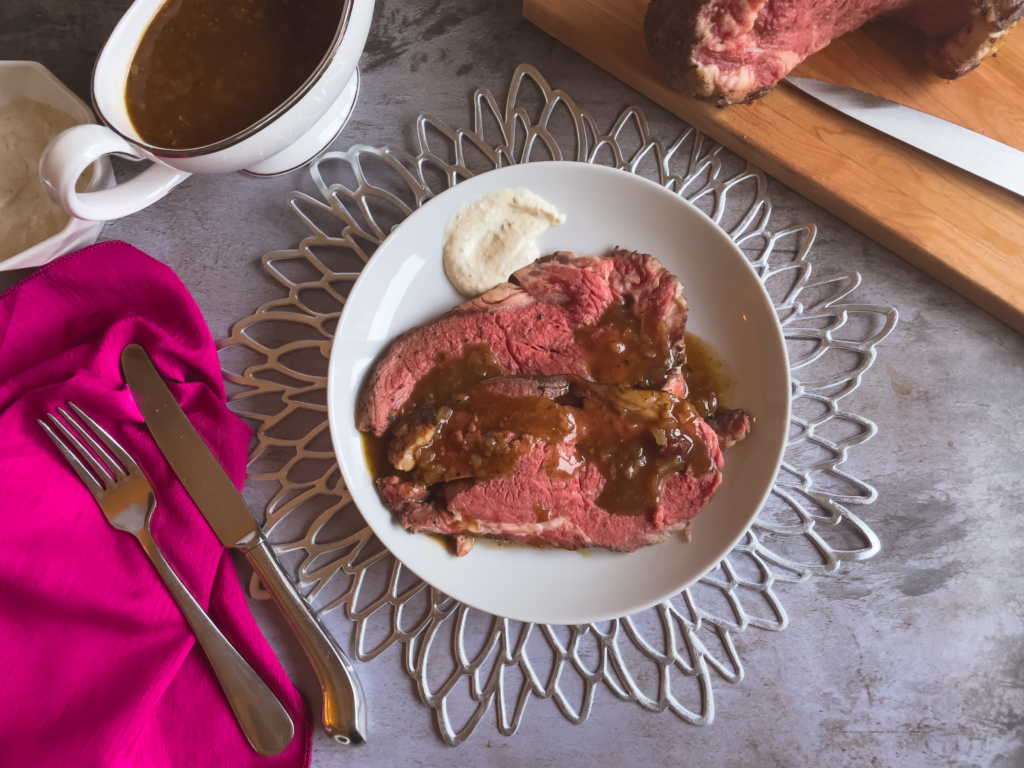
| Serving | Active Time | Cook Time |
| 2 to 4 | 20 minutes | 3 hrs 15 minutes (to 8 hrs 15 minutes), plus preheat time |
Ingredients and Tools
Equipment
- Suvie or immersion circulator
- Large pot or sturdy container (if using an immersion circulator)
- Vacuum sealer bag or freezer-safe resealable bag
- Medium skillet
- Cutting board and chef’s knife
- Tongs
- Whisk
Ingredients
- 1 (boneless) rib roast / prime rib (around 2 ½ to 3 lb), trimmed of excess fat
- Kosher salt and freshly ground black pepper
- 4 tbsp garlic herb butter or a flavored butter of your choice, divided
- 1 large sprig fresh thyme or rosemary
- 1 large shallot, peeled and minced
- 2 cups beef stock
- 1 tbsp cornstarch
- Horseradish cream sauce to serve
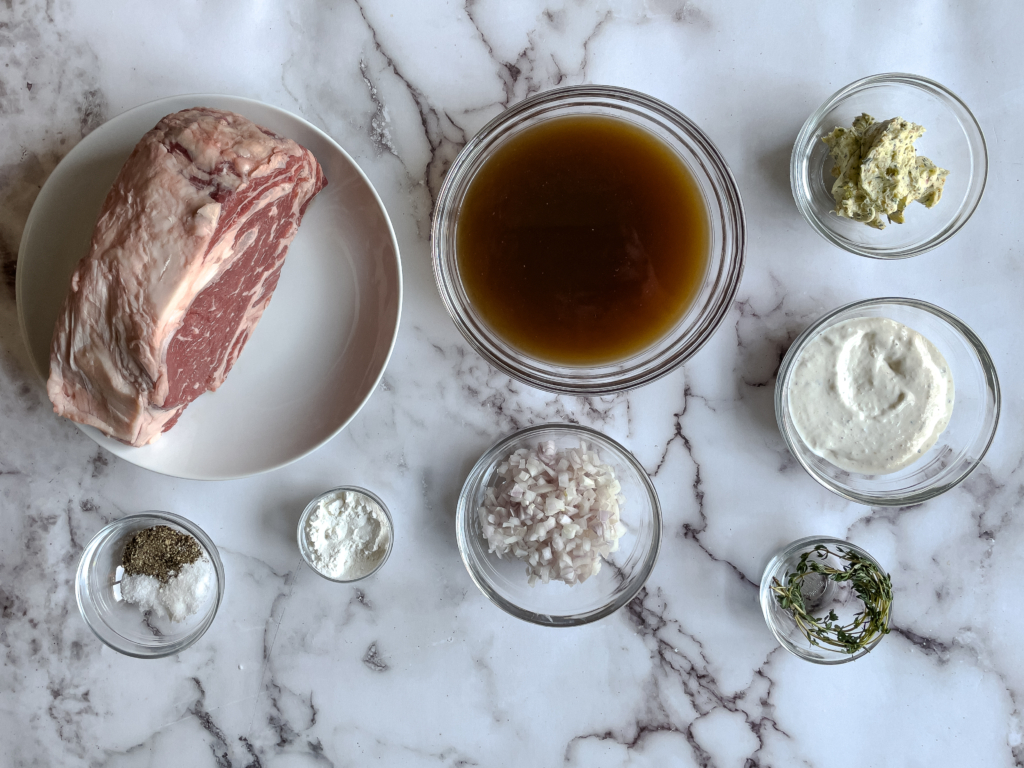
Directions
1) If you’re using a sous vide immersion circulator, preheat your water bath to 135°F.
2) Season the prime rib generously with kosher salt and black pepper. Transfer to a vacuum bag or resealable bag. Add 1 tbsp garlic herb butter with 1 large sprig of fresh herbs and seal bag. If you’re using a resealable bag, use the water displacement method to seal.

3) Lower the bag into the heated water bath and cook for 3 to 8 hours.
If you are using your Suvie, place the bag into a Suvie pan and cover entirely with water (it’s okay if the roast sticks out of the pan). Insert pan into the bottom of your Suvie and input the following settings.
Suvie Cook Settings
Bottom Zone: Sous Vide at 135°F for 3 hours

4) Remove rib roast with tongs, carefully open the bag, reserving cooking liquid. Discard herb sprig. Pat meat dry with paper towels; season with salt and pepper. Rub 2 tbsp garlic herb butter all over the roast.
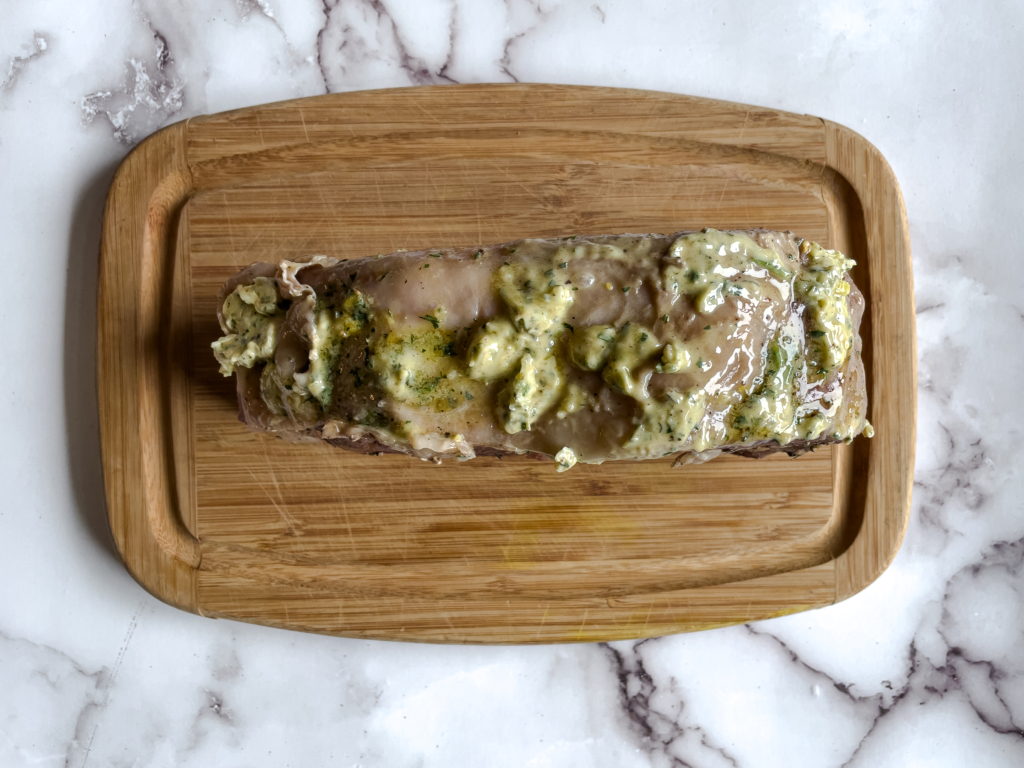
5) Meanwhile, heat a large cast iron or heavy-bottomed skillet over medium-high heat. Place the fat cap side down first to crisp and caramelize, carefully holding upright with tongs for about 2 to 3 minutes. Briefly sear on all sides, ensuring all fat has crisped on edges. Transfer to a cutting board.
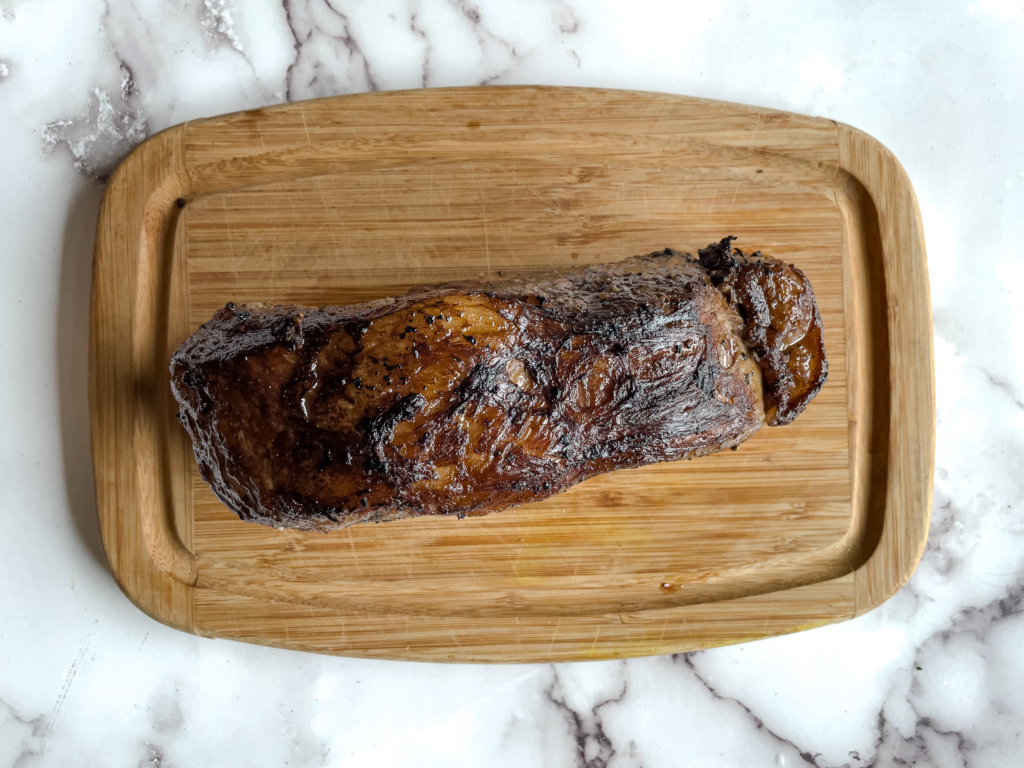
6) Carefully wipe skillet with paper towels to remove any blackened bits. Return to medium-low heat. Add remaining 1 tbsp garlic herb butter, and swirl to melt. Add 1 minced shallot, stirring to combine, and sauté 1-2 minutes. Add reserved cooking liquid and any resting juices from cutting board with 2 cups beef stock. Increase heat to medium-high and simmer until it reduces by one-third, about 3 minutes. Mix 1 tbsp cornstarch with 2 tbsp water. Whisk into beef stock. Simmer for 1-2 minutes until gravy has thickened and coats the back of a spoon.
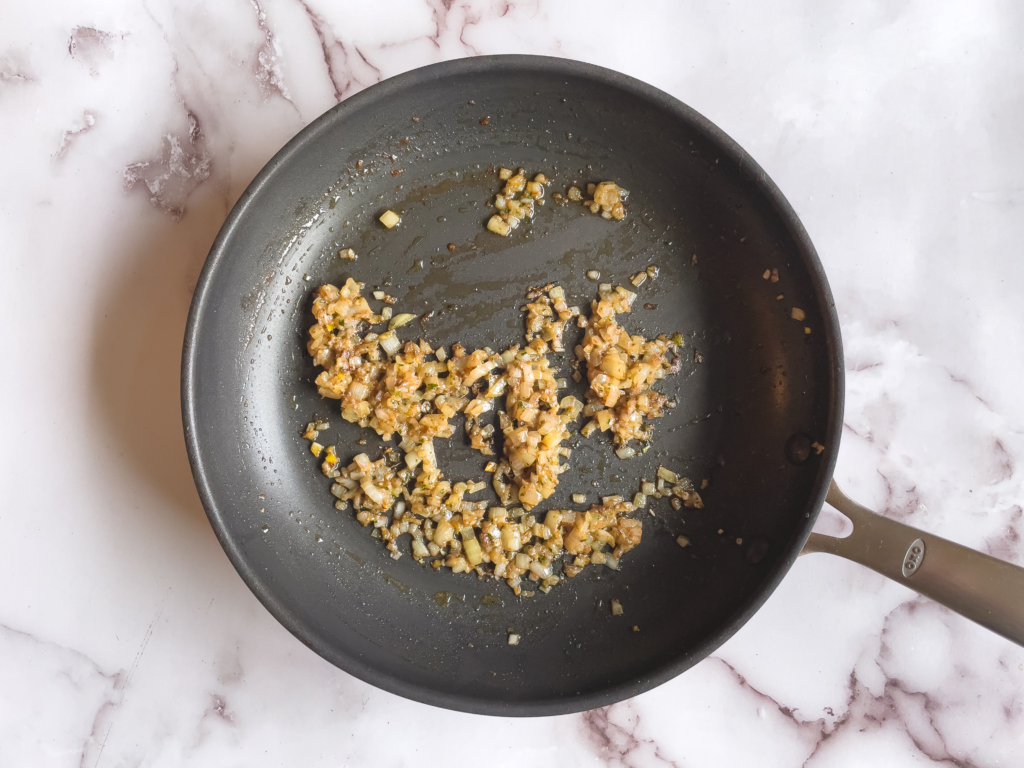
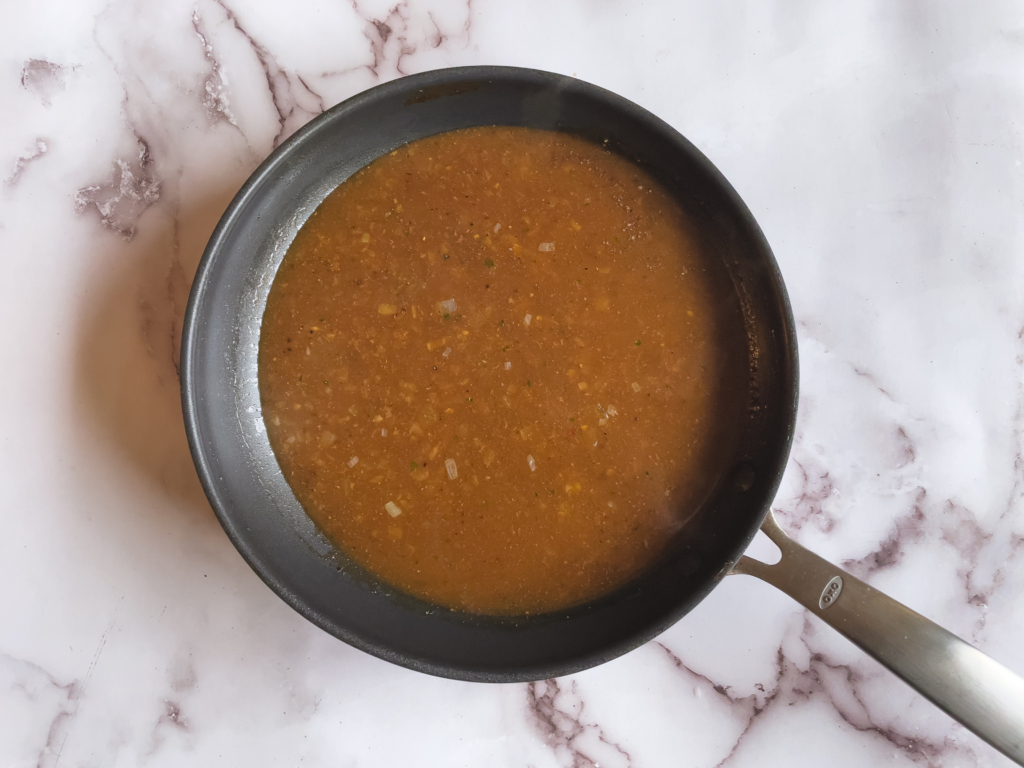
7) Using a sharp knife, slice prime rib into desired thickness. Serve with beef gravy and horseradish cream alongside.
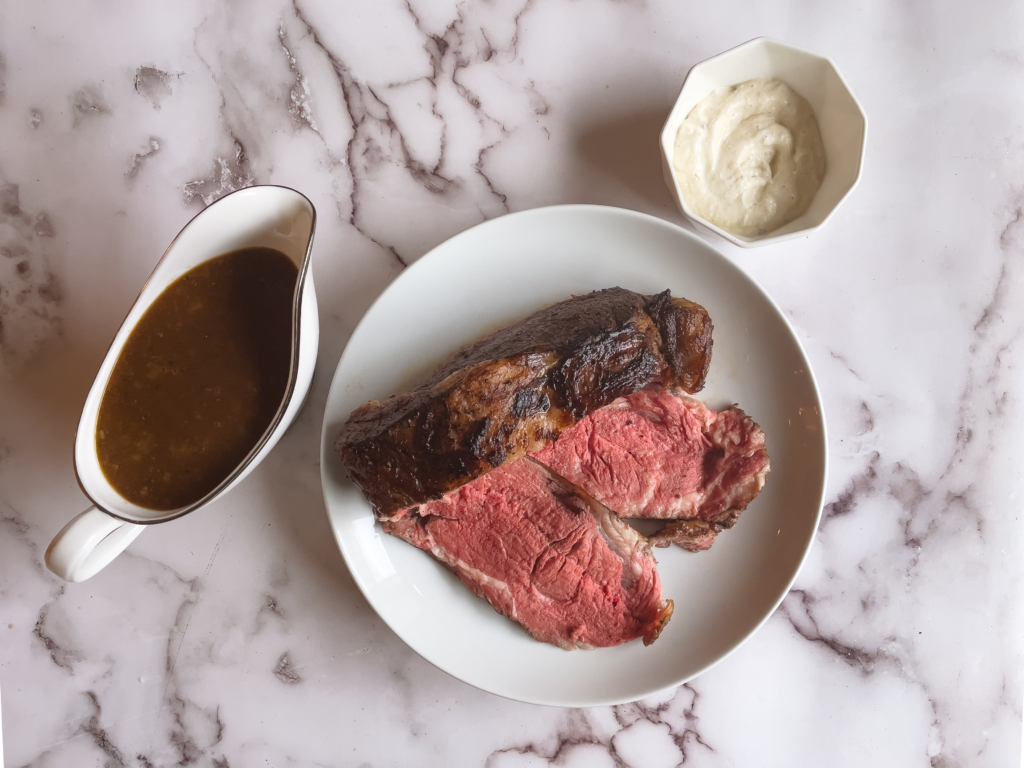
RECIPES TO TRY:
Our Favorite Holiday Recipes
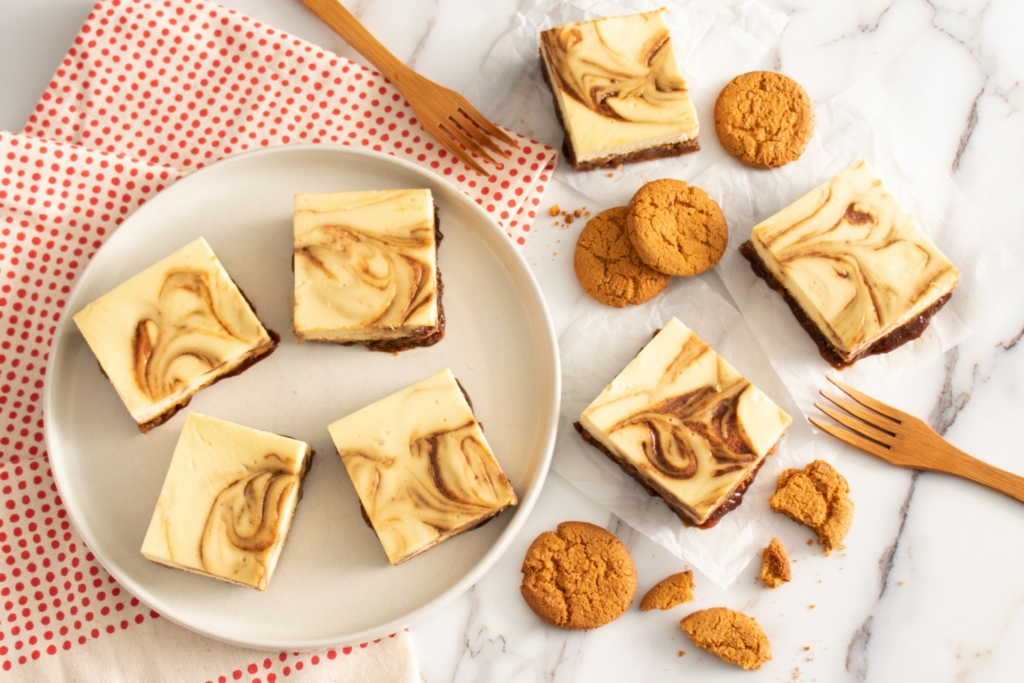
The Best Beef Meals
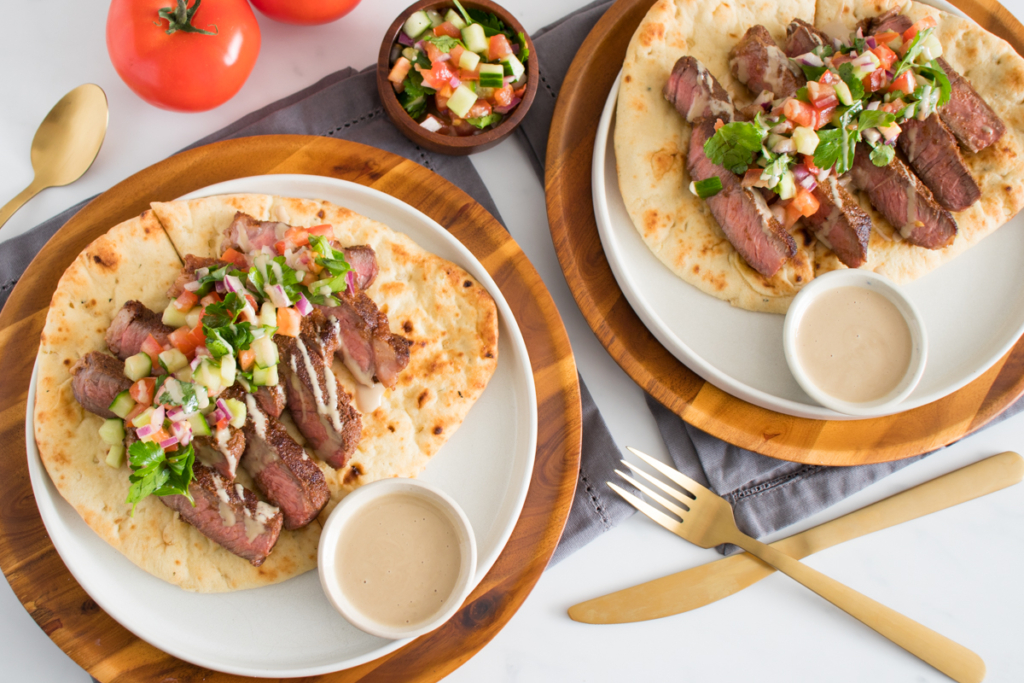
Eggnog Créme Brûlée
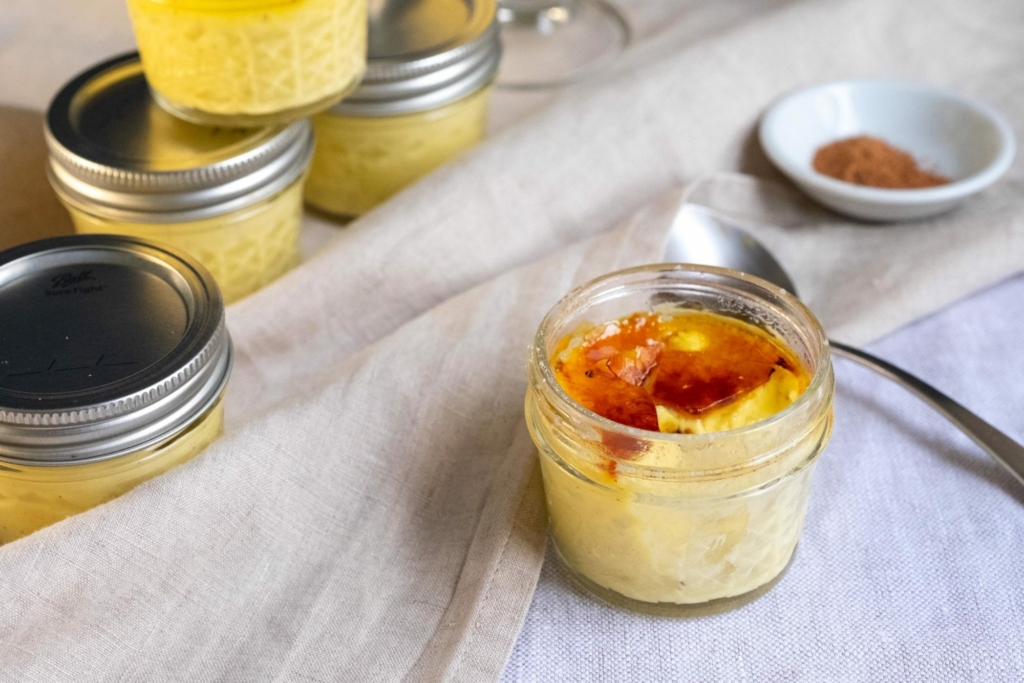
Steak Sandwiches with Horseradish Sauce
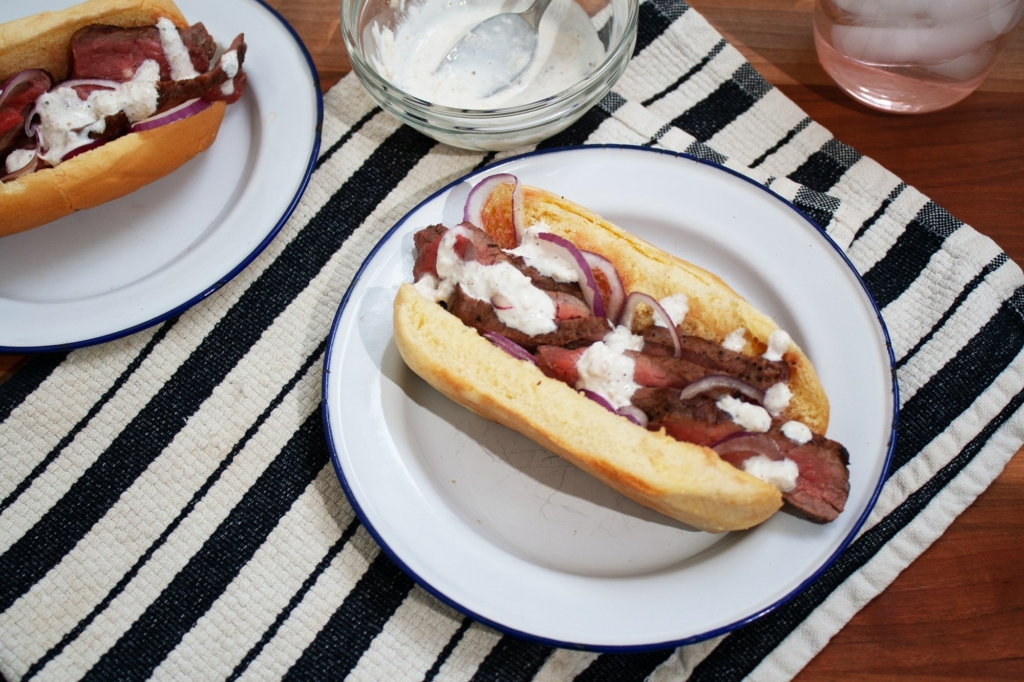
Garlic Butter Steak with Crispy Potatoes
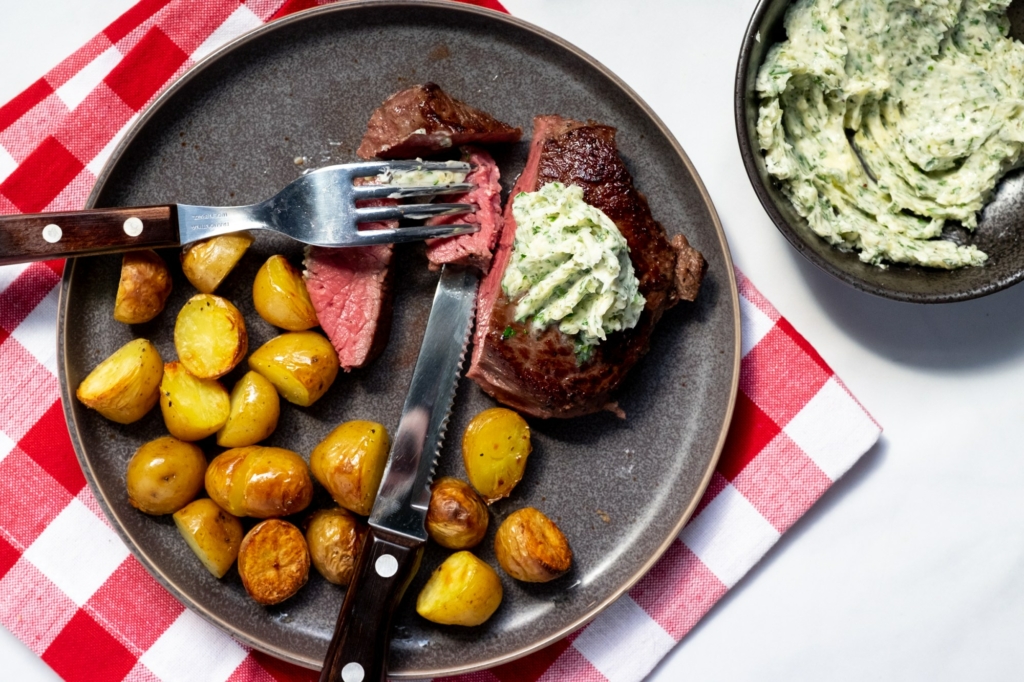
How to Sous Vide Pulled Buffalo Chicken
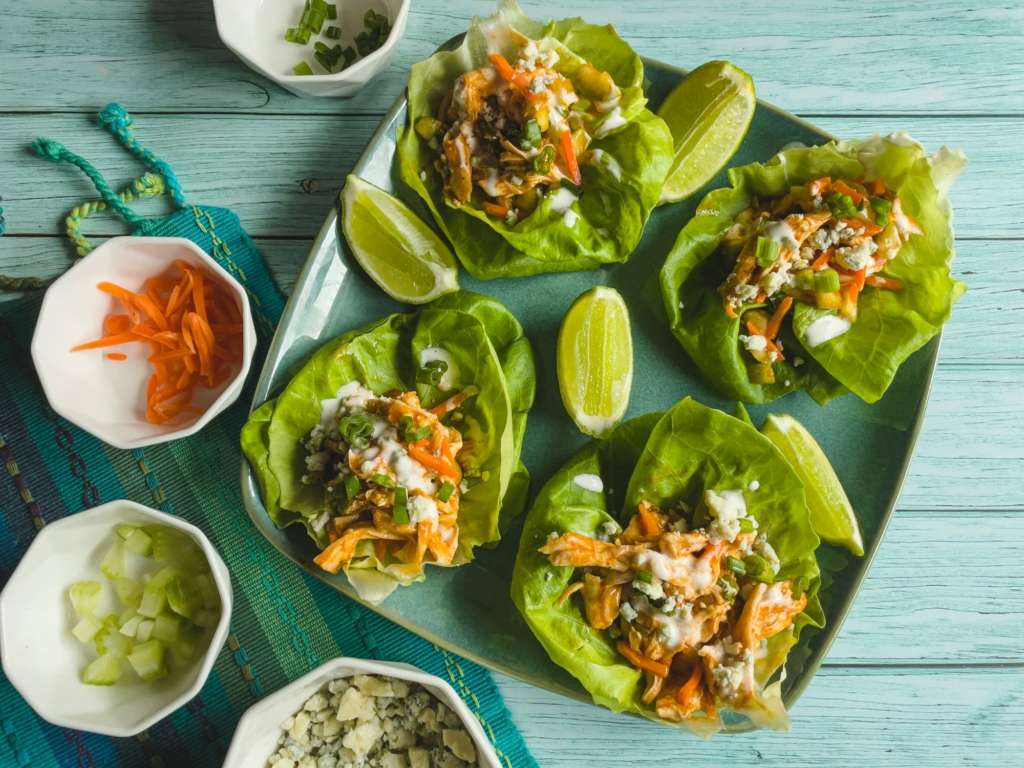
Stuffed Mushroom Bites
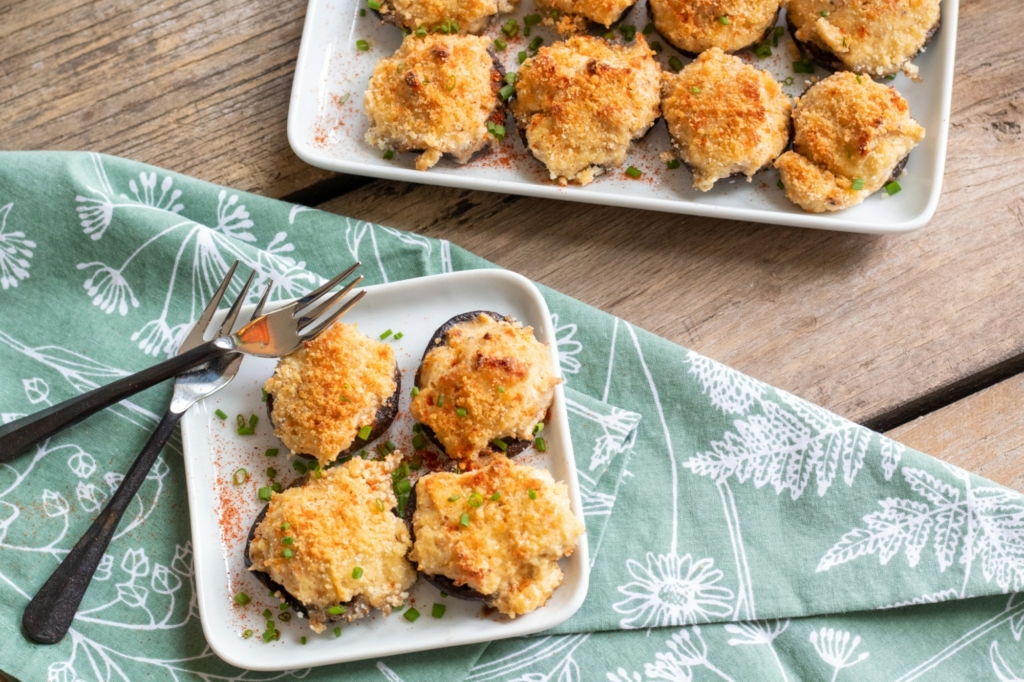
All About: Salmon Gravlax

FAQs
Can I use any type of plastic bag?
You can, however, make sure that they are made from polyethylene. Some branded bags are made using polyethylene, a BPA and dioxin-free plastic that can safely handle sous vide cooking temperatures up to 190°F. Some generic branded plastic bags are made using cheaper polyvinyl chloride (PVC), which cannot handle high temps and contains chemicals that can leach into food.
Are the cooking temperatures safe?
Our recommended cooking temperatures for Sous vide and Suvie are lower than what the USDA recommends. However, cooking times and temperatures are long enough and high enough for “pasteurization” to make your food safe. The USDA recommendations indicate the temperature needed to instantly kill food pathogens. By cooking for a longer time at a lower temperature, we are able to achieve the same effect. However, high-risk populations should use extra caution when preparing foods below the USDA recommended temperatures.
Can I cool my rib roast after the sous vide process and sear it later?
For food safety and general food quality reasons, we don’t recommend it. Steak should be seared and eaten soon after the sous vide step.
Can I leave my rib roast in the water bath indefinitely?
You can, but it’s best when it’s removed no longer than 8 hours; otherwise, the meat may not retain the desired texture.
How long will leftover prime rib last?
You can refrigerate any leftover prime rib in an airtight container or resealable bag for 5 to 7 days in the refrigerator or 2 to 3 months in the freezer.
How do I sous vide a larger cut of rib roast?
If you are using an immersion circulator and if you have a larger crowd, you could increase the weight of the cut and sous vide on the rib bones, if desired. For a larger cut, it’s recommended to sous vide for 6 to 8 hours.



